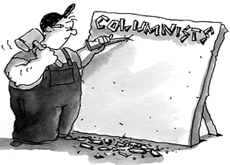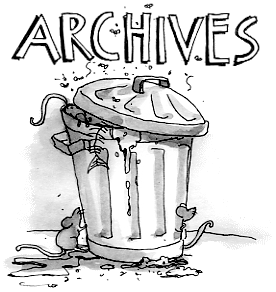Miranda's youthful side
 Stephen Keim •
Stephen Keim •  Friday, July 29, 2011
Friday, July 29, 2011 Taking the Fifth ... The slip-sliding principles that the US Supremes have applied to the politics of law enforcement ... Justice Anthony Kennedy breaks the deadlock on Miranda warnings, custody and interrogation of a 13-year old ... Stephen Keim reports
 A favourite story told by campaigners for an Australian charter or bill of rights concerns the large number of people who believe that we already have one.
A favourite story told by campaigners for an Australian charter or bill of rights concerns the large number of people who believe that we already have one.
The same believers also say they have a right to plead the Fifth Amendment and that they are protected by their Miranda rights.
In other words, our culture and thinking about the law is profoundly influenced by the United States.
Kerri Mellifont in her book published in 2010, Fruit of the Poisonous Tree, looks at the principles by which courts exclude derivative evidence - that is, evidence obtained as a result of knowledge gained in other, earlier and unlawful, processes.
An example of derivative evidence may be a gun with fingerprints discovered as a result of information gained by torturing or illegally detaining a suspect.
In her discussion of the United States approach to derivative evidence, Mellifont tracked the principles that apply to the gathering of primary evidence.
The narrative that emerges is one of liberal Supreme Court justices in the 1960s and 70s drawing on the Fifth Amendment to closely regulate the exercise of powers by law enforcement officers to question suspects.
The court was prepared to prevent evidence from being received in prosecutions if the rules laid down are not followed.
Later supreme courts swung in favour of the need for law enforcement officials to have greater discretion concerning the way their powers were exercised.
The corollary of more recent new approach is less strict rules accompanied by a reduced willingness to exclude evidence from being received in prosecutions.
As the lay Australians engaged by Charter of Rights campaigners picked up from the TV crime shows they watched, a key player in these developments was the 1966 case of Miranda v Arizona (384 US 436).
Miranda is a case on the application of the privilege against self-incrimination safe-guarded in the Fifth Amendment to the United States Constitution.
The doctrine laid down in Miranda sought to ensure that confessional statements made to police were voluntary and not affected by the inherent pressures that arise when a citizen is in the interested presence of police officers.
The court required that persons in custody must be warned that statements made might be used against them; told that they do not have to answer police questions; and informed of their right to have an attorney present during any questioning.
If a Miranda warning was not given inculpatory statements made in response to police questioning would be excluded from being received by a court.
The exclusion of the evidence follows automatically from the failure to give the warning. The result is not dependent upon actual involuntariness or intimidation of the suspect nor as a result of any exercise of discretion by the court.
The automatic Miranda exclusion on the grounds of assumed involuntariness is distinct from a broader discretion given to judges to exclude confessional statements where actual involuntariness is shown to have been present.
The core Miranda doctrine has survived the subsequent change in attitude by the Supreme Court, however its reach and its impact have been cut back by successive decisions.
The more restrictive approach concerns the determination of when a suspect is in custody. While any contact with police officers may, at one stage, have been regarded as giving rise to Miranda rights, decisions have tended to contain the concept to circumstances that are clearly recognisable as custodial.
 The US Supremes - feeling their way
The US Supremes - feeling their way
The modern rules as to when a suspect is in custody for the purpose of the Miranda doctrine are reflected in the 1994 case of Stansbury v California (511 US 318).
They speak of an objective inquiry as to whether a reasonable person, in the circumstances of the case, would have felt that he or she was at liberty to terminate the interrogation and leave.
If a reasonable person would feel that way, no warnings are necessary.
So it's surprising to see a case decided by the US Supreme Court in recent weeks that did not trim back further on the application of Miranda.
JDB v North Carolina concerned a 13-year-old, seventh grade student who was suspected of being involved with a house break-in.
Investigators went to his school and spoke to school authorities. JDB was taken from his classroom to a closed door conference room and was questioned by the officers and school authorities for a minimum of 30 minutes.
The courts below held that the objective test for the application of the Miranda principles had not been satisfied.
They also held that the boy's age was irrelevant to the application of that test.
By a five/four majority, the Supreme Court held that age was a relevant factor to be taken into account when applying the test laid down in Stansbury.
 Sonia Sotomayor: age of suspect a factor to be taken into account in objective determination of custodyThe objective nature of the test was held by the majority and minority to be one of the strengths of the Miranda doctrine because law enforcement officers do not have to worry about the subjective characteristics or state of mind of the particular suspect.
Sonia Sotomayor: age of suspect a factor to be taken into account in objective determination of custodyThe objective nature of the test was held by the majority and minority to be one of the strengths of the Miranda doctrine because law enforcement officers do not have to worry about the subjective characteristics or state of mind of the particular suspect.
However, Justice Sonia Sotomayor (nominated to the court by President Obama in 2009) argued that police officers had the ability to tell the difference between an adult and a much younger person.
Although officers may not be able to be precise about whether a suspect was 14 or 15, they would be broadly aware of the age of a juvenile suspect and would be able to factor that into the objective test.
Accordingly, officers would not be disadvantaged by being required to take age into account.
The court split along traditional and expected lines.
Justice Sotomayer was joined by liberal justices, Ruth Bader Ginsburg, Stephen Breyer and Elena Kagan while conservative justices, Chief Justice John Roberts, Antonin Scalia and Clarence Thomas supported the dissent by conservative Justice Samuel Alito.
The moderate conservative, Justice Anthony Kennedy, provided the deciding vote by, on this occasion, voting with his more liberal colleagues.
It would be wrong to read too much into this decision. There is unlikely to be a return to halcyon days of the 1960s and 70s.
The reach of the Fifth Amendment's ability to impose restrictions on the way police interviews of suspects must be conducted has been hammered out in the decisions that preceded Stansbury v California.
That reach amounts to a compromise that both liberals and conservatives can live with.
 Keim SCIt is encouraging to know, however, that patently sensible propositions such as the idea that the age of a child is a matter that can feed into the objective test as to when a suspect is in police custody are not rejected out of hand.
Keim SCIt is encouraging to know, however, that patently sensible propositions such as the idea that the age of a child is a matter that can feed into the objective test as to when a suspect is in police custody are not rejected out of hand.
It is comforting to know that, courtesy of Justice Kennedy, sensible propositions can still command a majority on the Supreme Court.
Stephen Keim
 Fifth Amendment,
Fifth Amendment,  Miranda
Miranda 








Reader Comments